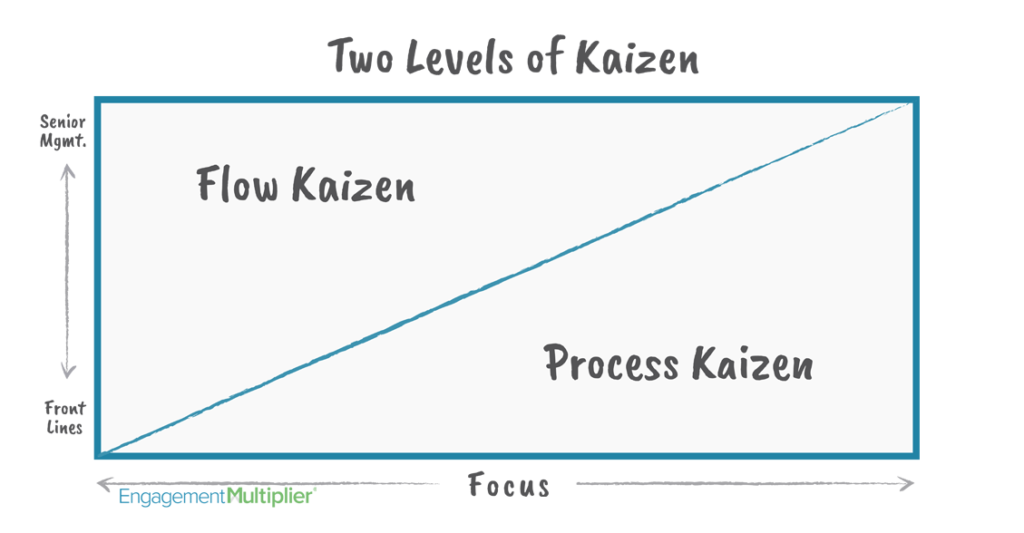We didn’t plan it – the similarity between our platform and the Japanese business philosophy of Kaizen. But making small, continuous improvements on individual and company-wide scales is what we help businesses do. The more we learn about Kaizen and the more we see how our platform helps our clients, the more we see just how much our tool facilitates this impressive optimization process.
Kaizen directly translates to “improvement.” In business, kaizen refers to the practice of continuously improving all functions, a task involving every employee, from the CEO to assembly line worker.
That’s the standard definition that you’ve probably heard before. But did you know that there are two approaches to Kaizen?
Flow kaizen and process kaizen
- Flow kaizen improves the flow of information and materials and is used to optimize how entire teams, departments, and even companies function.
- Process kaizen refers to optimizing what each worker does in his or her own workstation or role. Employees are encouraged to constantly think of solutions and improvements they can implement themselves, the same day if possible.

Process kaizen culture in practice: Empowering the individual
As part of our employee engagement survey, we ask individual employees what they can do, as individuals, to improve their own engagement over the next 90 days, that doesn’t require resources from management to implement.
After we’ve asked them to rate Leadership’s engagement and their own levels of engagement and ask for their input on what changes could be made by management to improve engagement on a company-wide (or team-wide) scale, we also ask them to take some responsibility for engagement themselves. It’s not only a reminder that engagement is two-sided, it’s also a call to action.
Essentially, we’ve built “process kaizen culture” into Engagement Multiplier.
Flow kaizen culture: Optimizing communication
Flow kaizen, also called “system kaizen,” looks at the entire operation to find opportunities for improvement that might be at the “process”/individual level, or might be system-wide.
Often, the opportunity to improve the flow of an operation has something to do with improving communication between Leadership and employees, and between employees themselves.
We see these communication issues come up again and again:
- When employees don’t understand the ‘whys’ behind established procedures or new decisions being made…
- When employees don’t feel free, or safe, to give their opinions and offer their ideas…
- When employees aren’t asked for input on how they can do their jobs better…
When these communication issues arise, employees often end up feeling like management doesn’t care about or respect them. And when employees don’t feel cared about or respected, it’s nearly impossible for them to feel loyalty for their companies or passion for their work. Internal squabbles can escalate, teams can turn into cliques, and an “us vs. them” attitude can all but wreck your office culture.
Giving employees a safe, anonymous space to air their grievances, give their feedback, and get tangible evidence that their ideas are listened to and put into action can clear the air. In fact, we’ve recently published a client story that is all about how they used Engagement Multiplier to heal their company culture – all through improving communication.
Of course, a better flow of communication leads to more ideas for improvement, and the 90-day survey cycle ensures that small actions towards improvement are taken and measured.
Regular check-ins + action + measurement = Improvement
While business owners can choose their own survey cycle lengths, our original 90-day survey cycle was designed with incremental, yet high-impact, improvements in mind. We found that, for most companies, 90 days is enough time to consider input from the last survey, form a plan, and decide on a set of actions to address issues and slowly optimize the work environment.
Then, at the end of 90 days, employees tell you how you’ve done.
At the same time, they’ve set specific tasks for themselves as well.
After several cycles of surveys, actions, and feedback, you’ll be able to see significant improvements – both in the survey and in how it feels to walk into your office every day.



